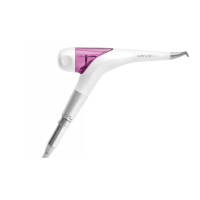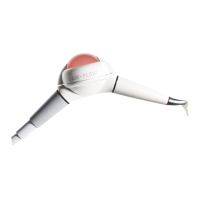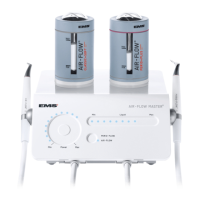FB-618/AU – rev.E – ed.2019/08
Proximity fields from RF wireless communications equipment
IEC 61000-4-3
Immunity
test level
(V/m)
385 380-390 TETRA 400
Pulse Modulation
18Hz
1,8 0,3 27
450 430-470
GMRS 460,
FRS 460
±5 kHz deviation
2 0,3 28
704-787 LTE Band 13, 17
Modulation
0,2 0,3 9
810
800-960
GSM 800/900,
TETRA 800,
iDEN 820, CDMA
850, LTE Band 5
Pulse
Modulation
18 Hz
2 0,3 28
870
1700-1990
1900,
GSM 1900, DECT,
LTE Band 1, 3, 4,
Pulse
Modulation
217 Hz
2 0,3 28
1970
2450 2400 -2570
802.11b/g/n, RFID
2450,
Pulse
Modulation
217 Hz
2 0,3 28
5100 – 5800 WLAN 802.11a/n
Modulation
0,2 0,3 9
Recommended separation distances
The product is intended for use in an electromagnetic environment in which radiated RF disturbances are controlled. The customer or the user of the
product can help prevent electromagnetic interference by maintaining a minimum distance between portable and mobile RF communications equipment
(transmitters) and the product as recommended below, according to the maximum output power of the communications equipment.
Rated maximum
output power of
transmitter
W
Separation distance according to frequency of transmitter (m)
d =
3.5
√P with V=3V
d =
3.5
√P with E=3V/m
d =
7
√P with E=3V/m
For transmitters rated at a maximum output power not listed above, the recommended separation distance d in metres (m) can be estimated using the
equation applicable to the frequency of the transmitter, where P is the maximum output power rating of the transmitter in watts (W) according to the
transmitter manufacturer.
NOTE: This equipment has been tested and found to comply with the limits for a Class B digital device, pursuant to part 15 of the FCC Rules. These limits
are designed to provide reasonable protection against harmful interference in a residential installation. This equipment generates, uses and can radiate radio
frequency energy and, if not installed and used in accordance with the instruction, may cause harmful interference to radio communications. However, there
is no guarantee that interference will not occur in a particular installation. If this equipment does cause harmful interference to radio or television reception
which can be determined by turning the equipment off and on, the user is encouraged to try to correct interference by one or more of the following
measures:
- Reorient or relocate the receiving antenna.
- Increase the separation between the equipment and receiver.
- Connect the equipment into an outlet on a circuit different from that to which the receiver is connected.
- Consult the dealer or an experienced radio/TV technician for help.
Electromagnetic emissions compliance
Electromagnetic environment - guidance
The product uses RF energy only for its internal function. Therefore, its RF emissions
are very low and are not likely to cause any interference in nearby electronic
Class B
The product is suitable for use in all establishments, including domestic
establishments and those directly connected to the public low-voltage power supply
network that supplies buildings used for domestic purposes.
Harmonic emissions IEC 61000-3-2
Class A
Voltage fluctuations / flicker emissions
IEC 61000-3-3
Complies
